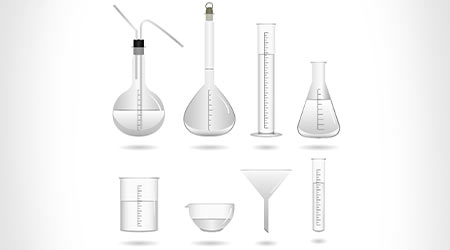
Contributed by PathoSans.
In recent years, much has been learned about the efficacy of on-site generated ElectroChemically Activated (ECA) Solutions as scientific testing in other fields sheds light on practical applications for JanSan.
Third-party research validates the efficacy of two solutions produced using an on-site ECA solution generator, water, salt, and electricity, at a cost of pennies per gallon:
• A cleaner (a non-irritating alkaline multi-purpose cleaning solution)
• A disinfectant (an effective germicide based on hypochlorous acid or HOCL).
Fact: ECA solutions containing hypochlorous acid are effective germ killers without the use of other chemicals.
Basis: Per researchers at the University of Connecticut and the University of Georgia: “EO water is highly effective in killing E. coli O157:H7, S. enteritidis, and L. monocytogenes … An advantage of EO water is that it can be produced with tap water, with no added chemicals...” (Reference: Efficacy of Electrolyzed Oxidizing Water for Inactivating Escherichia coli O157:H7, Salmonella enteritidis, and Listeria monocytogenes, Appl. Environ. Microbiology, 1999)
According to researchers from Taiwan and the Department of Food Science and Technology, University of Georgia: “In recent years, EO water has gained interest as a disinfectant used in agriculture, dentistry, medicine and the food industry. It has been shown as an effective antimicrobial agent for cutting boards, [on fruits and vegetables,] and food processing equipment.” (Reference: Application of electrolyzed water in the food industry, Food Control journal, 2008)
Fact: HOCL has a broad spectrum of effectiveness.
Basis: HOCL shows antimicrobial activity on many pathogens including:
Pseudomonas aeruginosa
Staphylococcus aureus
E. coli O157:H7
Salmonella
Listeria
Campylobacter
Others
HOCL can also kill mold species, such as:
Cladosporium
Aspergillus
Others
(Reference: Application of electrolyzed water in the food industry, Food Control journal, 2008)
Fact: ECA solutions of hypochlorous acid are safer for people and surfaces, compared to bleach, and are environmentally preferable.
Basis: “The main advantage of EO water is its safety”, and it is “not corrosive to skin, mucous membrane, or organic material.” (Reference: Application of electrolyzed water in the food industry, Food Control journal, 2008)
Conversely, the active ingredient in bleach is hypochlorite, which may damage tissue, irritate lungs, and degrade surfaces. (Reference: SDS of 5% hypochlorite solution.)
The same researchers noted ECA has a fourfold advantage over common packaged chemicals, providing:
• effective disinfection
• ease of use
• low cost
• environmental benefits (e.g., on-site generated ECA solution reduces the need to manufacture, package, ship, store, handle, and dispose of most packaged chemicals.)
“The greatest advantage of EO water for the inactivation of pathogenic microorganisms relies on its less adverse impact on the environment as well as users’ health because of no hazardous chemicals added in its production.”
(Reference: Application of electrolyzed water in the food industry, Food Control journal, 2008)
According to Jim Swartz, physicist and managing director of PathoSans: “Application examples from other industries help to show the efficacy and safety of on-site generated ECA hypochlorous (HOCL) solution for sanitizing facilities. It is important for users to understand, this is not hypothetical or marketing spin, but solid evidence that leading technologies can reliably produce high-performance sanitizing or disinfecting solutions onsite for pennies on the dollar.”

 The Down and Dirty on Cleaning in Virus Season
The Down and Dirty on Cleaning in Virus Season How Surfactant Use is Expanding in Commercial Cleaning
How Surfactant Use is Expanding in Commercial Cleaning Maximize Your Margins: Learn How to Automate Pricing and Track Rebates
Maximize Your Margins: Learn How to Automate Pricing and Track Rebates